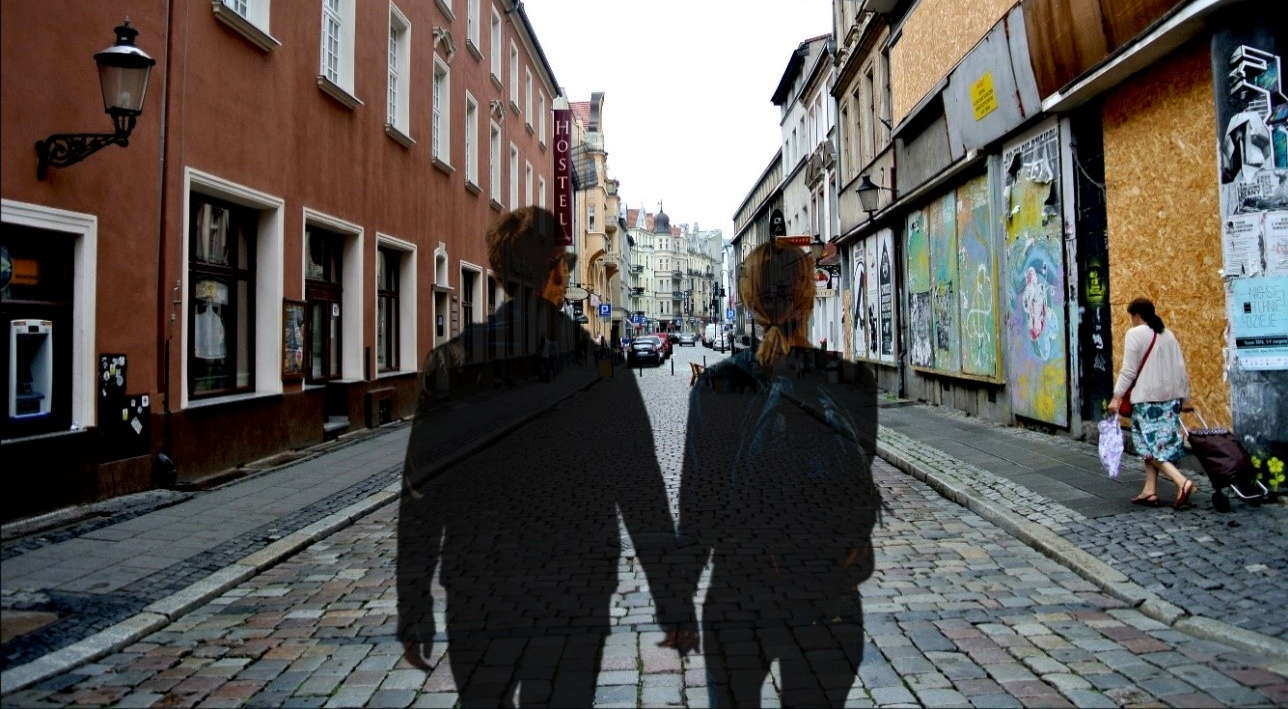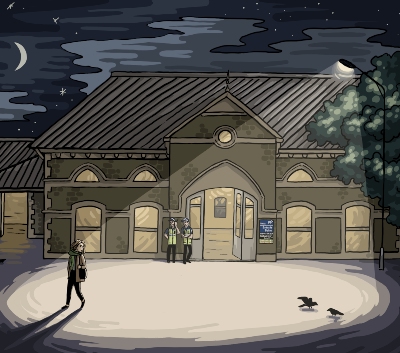Crime Prevention Through Environmental Design
How can we boost safety through urban design?
 Image: Supplied by the author, Nataly Arevalo
Image: Supplied by the author, Nataly Arevalo
Our daily choices of where we walk, favourite places to exercise, and habitual journeys demonstrate how connected we are to the design of our cities’ outdoor environments. We try to avoid certain environments that “feel like” they are putting us at risk of certain types of crimes, or that make us feel fearful.
Urban design has a strong influence on people’s walking preferences, and our overall wellbeing. For example, the description below, about a young female, demonstrates how urban design features are involved in her experience of being outdoors.
“Abbey was leaving the library after dark one night. As she walked to her car, she noticed a male was following from close behind [. . .]. [Once] Abbey turned towards [a] well-lit carpark where there were other [people] around the male disappeared.” (AHRC 2017, p. 70)
In Abbey’s situation, we see that two design features reduced the possibilities of crime and/or fear: lighting and a space with other people in it. This example, along with extensive research, shows the need for incorporating multiple design features when designing outdoor spaces for safety. This is why, in 2001, the Australian Government introduced Crime Prevention Through Environmental Design (CPTED) under the Environmental Planning and Assessment Act 1979.
In addition, practical guidelines for boosting safety in Australian cities and precincts are presented at a state level through Urban Design Guidelines for Victoria , Designing out Crime planning guidelines for Western Australia , Community safety design guideline for Northern Territory , Crime Prevention by Environmental Design in South Australia , Planning Safe Public Events Practical Guidelines in Tasmania, Crime Prevention Through Environmental Design for Queensland and New South Wales.
Introduction to CPTED
 Illustration: Elena Strelnikova
Illustration: Elena Strelnikova
The basis of Australian safety guidelines is CPTED (pronounced “sep-ted”), which is an analytical framework and tool aiming to reduce the opportunity for crime and the incidence of fear by the effective design, redesign, and use of the environment. CPTED’s ultimate purpose is to improve people’s quality of life. CPTED’s practical approach helps urban designers to consider the built environment in four categories:
1. Territoriality reinforcement
2. Surveillance (natural and mechanical)
3. Property management
4. Access control
These four categories include multiple outdoor design features to assist designers trying to design safe spaces, and to minimise the possibilities for crime and experiences of fear.
Principles of CPTED
Territorial reinforcement
This principle guides designers to create spaces that encourage perceptions of territorial protection. Spaces with high levels of territoriality make local communities feel that they own the space, becoming their own guardians. For instance, if someone is trespassing on private property or misusing public spaces, local communities can act by calling the police.
Territoriality design features include: landscaping, clear signage indicating private and public spaces, water or decoration features.
Surveillance (natural and mechanical)
The principle of natural surveillance guides designers to create spaces with opportunities for encountering, engaging, and interacting with other people. If a space has “more eyes” coming and going, it can discourage a potential crime that is likely to occur in isolated locations. Spaces require careful design to attract the type and frequency of activity and users evenly.
On the other hand, mechanic surveillance is one of the most traditional ways to enhance safety, through the use of both mechanical equipment and security personnel.
Natural surveillance design features include: activity of people, mixed-land use, night-time uses and infrastructure, buildings’ orientation, building entries, community-shared facilities (public equipment, urban furniture, bike racks).
Mechanic surveillance design features include: security cameras, lighting, and hiring security guards.
Access control
Access control guides designers to think about strategies to limit the access of potential offenders to a property. An essential element from access control is to drive, invite or restrict pedestrians through space by intuitive design. Access control design features include: signage, wayfinding signals, fences, divisor walls, vegetation, shrubs, gates.
Property management
Property management ensures that spaces are well maintained and controlled throughout all of a building/property’s life cycle. Property management encourages the community to have a consistently positive image of a space. Spaces without such good management are likely to become disorderly and targets of crime, fear, or both.
Key takeaways in designing for safety of public space

Urban safety needs multidisciplinary efforts from architecture, planning, policy-making, academia, government, and communities to promote a better understanding and implementation of it. There is an urgent need to apply safety tools such as CPTED when designing, to prevent future incidents in Victorian public spaces.
CPTED has the potential to offer much to urban planning with respect to the needs of women, seniors, and children, as they are the most likely targets of crime and fear.
About the author
Nataly Arevalo is an urban designer experienced in environmental and social urban planning. Nataly’s work and research focuses on Crime Prevention Through Environmental Design (CPTED) policy and how to build healthier, safer, and equitable precincts in Australia and Latin America. She is currently conducting research at Swinburne University of Technology (Victoria). You can find Nataly on Twitter or at LinkedIn.